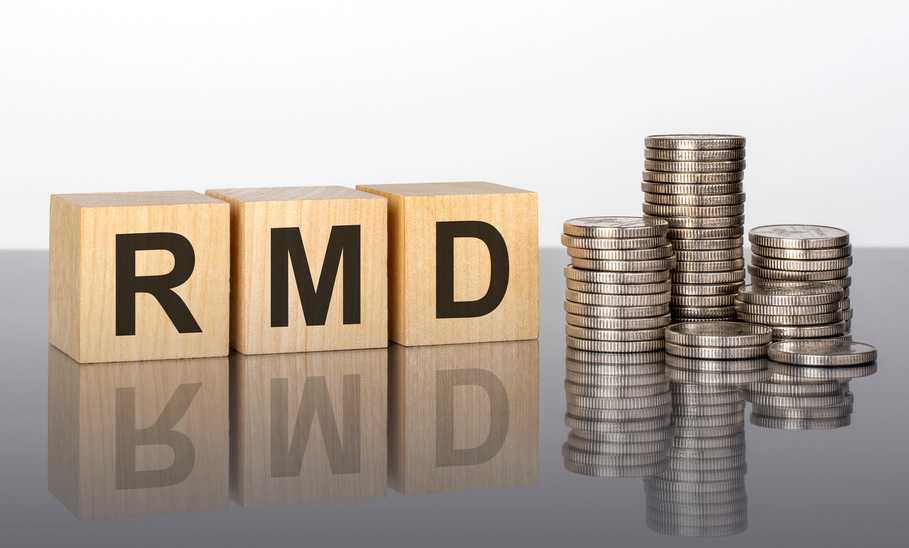Required Minimum Distribution (RMD) 2024: Definition, Calculation, and Implications

Our evaluations and opinions are not influenced by our advertising relationships, but we may earn a commission from our partners’ links. This content is created by TIME Stamped, under TIME’s direction and produced in accordance with TIME’s editorial guidelines and overseen by TIME’s editorial staff. Learn more about it.
The required minimum distribution (RMD) rule is something everyone should be familiar with. Once you reach a specific age, the Internal Revenue Service (IRS) requires you to start withdrawing from your traditional IRA, traditional 401(k), and a number of other employer-sponsored retirement plans. In 2024, the age to start taking RMDs is 73. .
One exception: If you are still employed at age 73 or older, you do not owe an RMD on your traditional 401(k) or similar retirement plan at the employer where you currently work. You do owe RMDs on any other traditional 401(k)s, IRAs, or similar tax-advantaged plans that you have accumulated over time.
What do these rules mean to you financially in your retirement years? Here’s a look at how RMDs work.
INVESTMENT AND INSURANCE PRODUCTS ARE: NOT A DEPOSIT • NOT FDIC INSURED • NO BANK GUARANTEE • MAY LOSE VALUE
J.P. Morgan Wealth Management is a business of JPMorgan Chase & Co., which offers investment products and services through J.P. Morgan Securities LLC (“J.P. Morgan”), a registered broker dealer and investment adviser, member FINRA and SIPC. TIME Stamped is a publisher of J.P. Morgan, (“Publisher”). The Publisher will receive compensation from J.P. Morgan if you provide contact details to speak with a J.P. Morgan representative. Compensation paid to the Publisher will be up to $500 per completed contact form. Compensation provides an incentive for the Publisher to endorse J.P. Morgan and therefore information, opinions, or referrals are subject to bias. J.P. Morgan and the Publisher are not under common ownership or otherwise related entities, and each are responsible for their own obligations. Investing involves market risk, including possible loss of principal, and there is no guarantee that investment objectives will be achieved.
John is a retired accountant who has just turned 76 and has $500,000 in a traditional IRA. He’d love to leave the money untouched but knows that tax laws dictate that he must withdraw at least some of it and add it to his taxable income. If he fails to do this, he’ll take a much larger tax hit in penalties.
Looking at an IRS-provided chart, John sees that he’ll need to withdraw $21,097. He arrives at this figure by referencing that chart, which lists 23.7 as the life expectancy factor for his age—his magic number. John divides his balance of $500,000 by that factor. The resulting number, 21,097, is his RMD, or the amount he must withdraw from his IRA.
RMDs apply to most tax-advantaged retirement accounts, including traditional IRAs, SEP IRAs, SIMPLE IRAs, 401(k)s, and 403(b)s. Even if you have inherited a retirement account, it’s still subject to a RMD. (Roth IRAs are not subject to RMDs in the owner’s lifetime, but heirs will have to take them.)
While your first RMD can be delayed until April 1 of the year after you turn 73, subsequent RMDs must be taken by Dec. 31 of each year. This means that if you delay the first RMD until the following year, you'll have to take two RMDs in that year.
Failing to take the required RMD amount by the deadline can result in a substantial penalty. Until recently, the penalty was a 50% excise tax on the amount not withdrawn. Now, thanks to the SECURE Act 2.0, which went into effect this year, this penalty has been reduced to 25% of the minimum amount that should’ve been withdrawn but wasn’t.
A financial advisor or a tax professional can help you sort through the ins and outs of RMDs as they relate to your retirement savings and overall portfolio.
RMDs are based on your retirement account balance and a life expectancy factor provided by the IRS. The calculation is meant to ensure that you gradually distribute and use the funds in your tax-advantaged retirement accounts over your lifetime. The formula works like this:
It’s important to note that your RMD is recalculated each year. This is because as you get older, the life expectancy factor decreases, which means you'll need to withdraw a larger percentage of your account balance.
If your retirement account is with an investment firm, its financial advisors can generally calculate what you owe. Just be sure to contact the company in time to have the funds transferred by the end of the tax year.
INVESTMENT AND INSURANCE PRODUCTS ARE: NOT A DEPOSIT • NOT FDIC INSURED • NO BANK GUARANTEE • MAY LOSE VALUE
J.P. Morgan Wealth Management is a business of JPMorgan Chase & Co., which offers investment products and services through J.P. Morgan Securities LLC (“J.P. Morgan”), a registered broker dealer and investment adviser, member FINRA and SIPC. TIME Stamped is a publisher of J.P. Morgan, (“Publisher”). The Publisher will receive compensation from J.P. Morgan if you provide contact details to speak with a J.P. Morgan representative. Compensation paid to the Publisher will be up to $500 per completed contact form. Compensation provides an incentive for the Publisher to endorse J.P. Morgan and therefore information, opinions, or referrals are subject to bias. J.P. Morgan and the Publisher are not under common ownership or otherwise related entities, and each are responsible for their own obligations. Investing involves market risk, including possible loss of principal, and there is no guarantee that investment objectives will be achieved.
Life expectancy charts are provided by the IRS to help individuals calculate RMDs from their employer-sponsored retirement plans. There are three types of charts:
The Uniform Lifetime Table is the one most commonly used to calculate RMDs. Here is the most recent version of this table:
| Age | Distribution period | Age | Distribution period |
|---|---|---|---|
72 | 27.4 | 97 | 7.8 |
73 | 26.5 | 98 | 7.3 |
74 | 25.5 | 99 | 6.8 |
75 | 24.6 | 100 | 6.4 |
76 | 23.7 | 101 | 6 |
77 | 22.9 | 102 | 5.6 |
78 | 22 | 103 | 5.2 |
79 | 21.1 | 104 | 4.9 |
80 | 20.2 | 105 | 4.6 |
81 | 19.4 | 106 | 4.3 |
82 | 18.5 | 107 | 4.1 |
83 | 17.7 | 108 | 3.9 |
84 | 16.8 | 109 | 3.7 |
85 | 16 | 110 | 3.5 |
86 | 15.2 | 111 | 3.4 |
87 | 14.4 | 112 | 3.3 |
88 | 13.7 | 113 | 3.1 |
89 | 12.9 | 114 | 3 |
90 | 12.2 | 115 | 2.9 |
91 | 11.5 | 116 | 2.8 |
92 | 10.8 | 117 | 2.7 |
93 | 10.1 | 118 | 2.5 |
94 | 9.5 | 119 | 2.3 |
95 | 8.9 | 120 and over | 2 |
96 | 8.4 |
Source: Internal Revenue Service
Generally, you have until Dec. 31 to take each year's RMD. If you haven’t withdrawn the full RMD by then, the sum not withdrawn is taxed at 25%. This penalty can drop to 10% if you correct the RMD within two years and file IRS Form 5329 with your federal tax return.
If you’ve spent your career building a nest egg, take care not to undo some of that hard work in retirement because you failed to make the RMD. The newest legislation substantially lowers the penalties, but the easiest way to avoid them altogether is to get familiar with RMD figures as they apply to your savings. An hour or so of study and planning will keep thousands of dollars in your pocket.
An inherited IRA passes to the beneficiary after the original account holder's death. They are subject to RMDs that dictate how beneficiaries must withdraw funds over time.
Commonly, the beneficiary is the spouse of the original account owner. They have the option to treat the inherited IRA as their own or roll it over into their personal IRA. If they choose this option, regular RMD rules for traditional IRAs apply.
Non-spouse beneficiaries such as children face different RMD rules. Generally, they must start taking RMDs from the inherited IRA by Dec. 31 of the year following the original account owner's death and potentially withdraw all the funds within 10 years.
Signed into law by President Biden on Dec. 29, 2022, the SECURE Act 2.0 includes several changes to rules regarding RMDs that build on provisions in the SECURE Act of 2019. They are:
The withdrawal rate comes from dividing your account balance by the distribution period for your age, which is based on life expectancy. In the Uniform Lifetime Table, the distribution period for a 73-year-old is 26.5, which means you would arrive at your RMD by dividing your account balance by this number. If you have $1 million in retirement savings, your RMD for the year would be $37,736.
There is no upper age limit for when RMDs stop. IRS tables cover age 120 and above, and the oldest person living in the United States, as of January 2024, is 115 years old.
The RMD percentage stems from your distribution period, which is a number you divide into your retirement account balance that is generated by the IRS based on your status and age. In the Uniform Lifetime Table, this number runs from 27.4 (age 72) to 2.0 (age 120 and older). Keep in mind that the distribution period changes every year.
The information presented here is created by TIME Stamped and overseen by TIME editorial staff. To learn more, see our About Us page.




